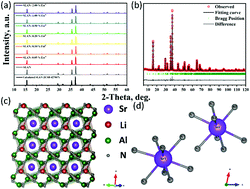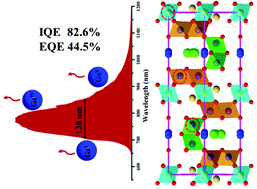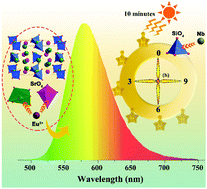J. Mater. Chem. C, 2020,8, 4956-4964. https://doi.org/10.1039/D0TC00277A

The SrLiAl3N4:Eu2+ phosphor has attracted considerable attention owing to its highly efficient narrow-band red emission. Herein, we report for the first time its red persistent luminescence (PersL) and photostimulated luminescence (PSL). After 254 nm light pre-irradiation, the SrLiAl3N4:0.1%Eu2+ phosphor shows 395 s red PersL at a 0.32 mcd m−2 threshold value and its PSL can still be detected under 980 nm light after 15 days. The thermoluminescence spectra evidence that the shallow trap (0.47 eV) plays a major role in PersL and the deep trap (0.81 eV) is responsible for PSL. The charging process for PersL and PSL is clarified by the thermoluminescence excitation (TLE) spectrum. By the aid of density functional theory (DFT) calculations, we verify that the trap levels are due to N vacancies. The electronic structure diagram (HRBE diagram) of SrLiAl3N4:Eu2+ with traps is constructed to illustrate the mechanism of PersL and PSL. The special feature that PersL and PSL both exist makes SrLiAl3N4:Eu2+ a potential candidate for applications such as anti-counterfeiting and optical information storage.




